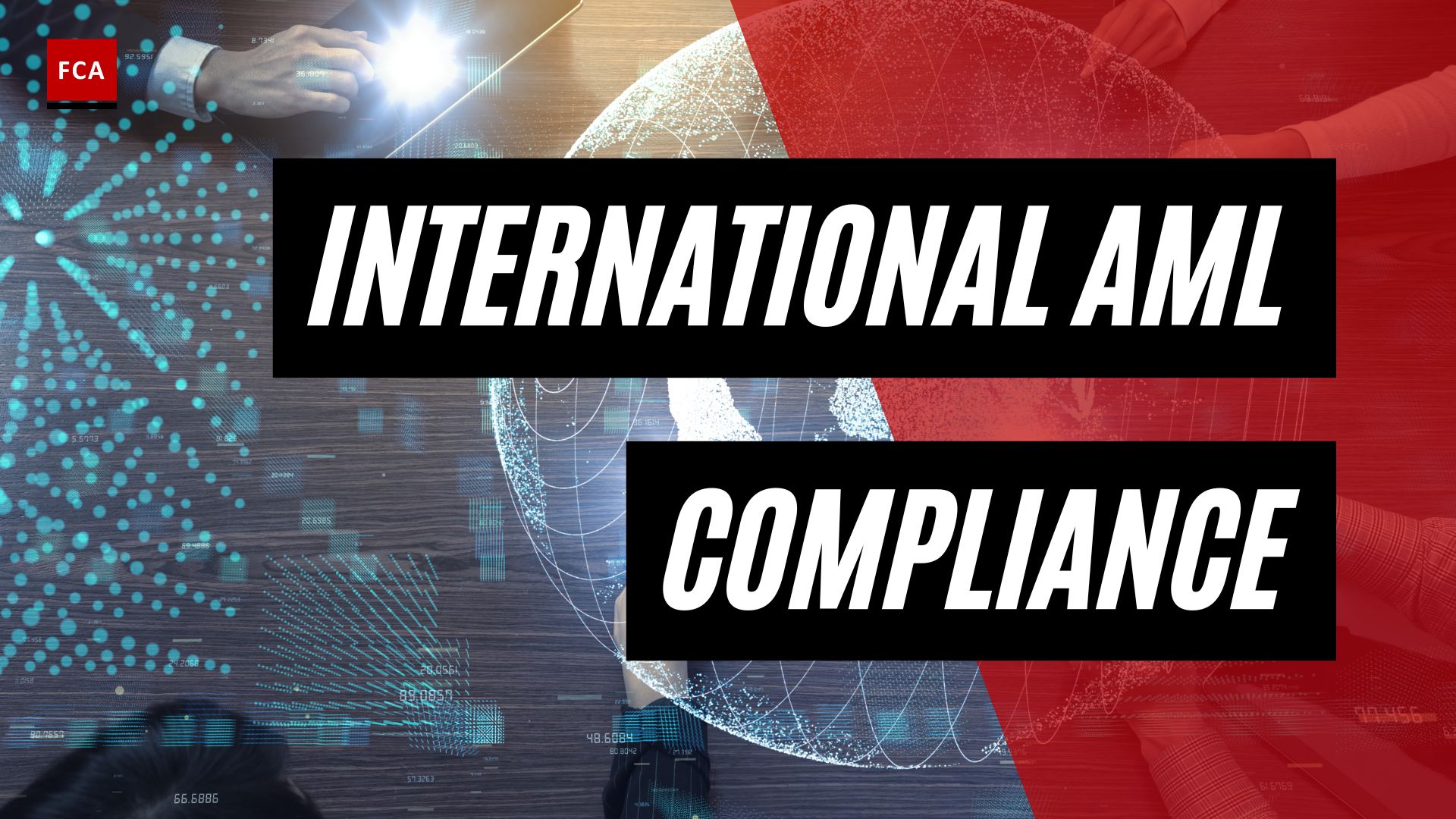Understanding AML Compliance
In the global financial environment, keeping ahead of illicit activities like money laundering is critical. In this context, Anti-Money Laundering (AML) compliance plays a pivotal role, especially for financial institutions. AML compliance software, in particular, has emerged as a powerful tool in this fight against financial crime.
Basics of AML Compliance
AML refers to a set of regulations, instructions, and procedures designed to prevent criminals from disguising illegally obtained funds as legitimate income. AML compliance software helps organizations detect, prevent, and report suspicious activities, adding an extra layer of security to their operations (Creatio).
AML compliance software is a proactive approach for organizations to safeguard their reputation, build trust with customers, and contribute to global efforts to combat financial crimes and money laundering activities. It automates processes related to Know Your Customer (KYC) verifications, Customer Due Diligence (CDD), and screening for Politically Exposed Persons (PEPs) and sanctions lists, thereby streamlining compliance efforts.
For a detailed guide on the necessary steps and checklists for an effective AML compliance program, refer to our AML compliance checklist.
Role of AML in Financial Institutions
For financial institutions, banks, insurance companies, and organizations handling large volumes of financial transactions, AML compliance software is a crucial tool. These tools help maintain secure and transparent operations while combating money laundering and terrorist financing activities.
The implementation of AML compliance software ensures compliance with regulations and minimizes financial crime risks. It enables these institutions to maintain a robust AML compliance framework that includes AML compliance training and AML compliance certifications, thereby ensuring that all employees are well-equipped to identify and tackle potential threats.
By automating and streamlining critical areas such as the know your customer checklist and customer due diligence checklist, AML compliance software plays a vital role in helping financial institutions stay ahead of financial crime. A strong commitment to AML compliance can help institutions safeguard their operations, protect their reputation, and foster trust among their customers.
Key Features of AML Compliance Software
AML compliance software is an essential tool for financial institutions to effectively manage and monitor their AML compliance efforts. This software offers a variety of features, such as real-time transaction monitoring, risk assessment tools, and customer onboarding processes, providing a comprehensive solution for businesses to stay ahead of financial crime.
Real-Time Transaction Monitoring
One of the critical features of AML compliance software is real-time transaction monitoring. This software is used by financial institutions and businesses to analyze and track financial transactions in real-time, identifying any suspicious activity related to money laundering, terrorist financing, or other illegal activities.
This tool allows businesses to analyze various activities such as currency exchange, bank transfers, money orders, deposits, and withdrawals. It assists in automated tracking of transactions and responding to AML, Countering The Financing of Terrorism (CFT), and Know Your Customer (KYC) requirements, enabling detection and reporting of any potential criminal activity to relevant authorities.
Implementing real-time transaction monitoring software ensures compliance with Anti-Money Laundering and Counter Financing of Terrorism regulations, reducing the risk of hefty fines and reputational damage.
Risk Assessment Tools
AML compliance software also includes risk assessment tools, which evaluate the risk profile of customers. These tools help identify high-risk customers, enabling financial institutions to take necessary precautionary measures.
Risk assessment tools analyze a variety of factors, including the customer’s location, transaction behavior, and background, to calculate a risk score. This score assists in determining the level of due diligence required and aids in the implementation of more stringent monitoring for high-risk customers.
Customer Onboarding Processes
Another vital feature of AML compliance software is its role in the customer onboarding process. This software conducts thorough due diligence during the customer onboarding process, ensuring compliance with Anti-Money Laundering and Counter Financing of Terrorism regulations.
The software checks customer details against global watchlists and sanctions lists, ensuring that the financial institution is not dealing with any individuals or entities involved in financial crimes. It also automates the customer due diligence process, saving time and reducing the risk of errors.
The three key features of AML compliance software – real-time transaction monitoring, risk assessment tools, and customer onboarding processes – form the backbone of an effective AML compliance program. By leveraging these features, financial institutions can ensure robust compliance with AML regulations, safeguarding themselves from financial crime and regulatory penalties.
The Role of Technology in AML Compliance
As money laundering tactics grow more sophisticated, so too must the technologies designed to combat them. Anti-money laundering (AML) compliance software utilizes various advanced technologies such as artificial intelligence (AI), machine learning, data analytics, and natural language processing to enhance the effectiveness and efficiency of monitoring transactions and combating money laundering (Creatio).
AI and Machine Learning in AML
The use of AI and machine learning has been increasingly incorporated into AML compliance software to improve detection accuracy and reduce manual efforts in monitoring transactions. By leveraging these technologies, AML software can effectively learn from historical transaction data, identify patterns, and predict future behavior to flag potential money laundering activities.
In addition, AI and machine learning can automate and scale Know Your Customer (KYC) and AML programs, verify ages at any touchpoint, fight fraud at every point of the identity lifecycle, and streamline identity operations. This not only improves the efficiency and accuracy of AML efforts but also frees up resources for other critical tasks.
Data Analysis and AML Compliance
Data analysis plays a crucial role in AML compliance. AML software encompasses technologies that prevent, detect, and report potential money laundering activities and financial crimes. Features may include risk profiling, ID verification, customer due diligence, watchlist screening, transaction monitoring, reporting, and audit trail capabilities.
By analyzing transaction data, AML software can identify suspicious patterns that may suggest money laundering activities. For instance, frequent large transactions or multiple transactions with a similar amount may raise red flags. Through a robust AML compliance program, these transactions can be further investigated to prevent potential financial crimes.
AML compliance software is not only used by financial institutions but also by entities in various industries such as fintechs, real estate agencies, insurance companies, cryptocurrency exchanges, and e-commerce and finance companies (Vespia). This highlights the pervasive nature of money laundering activities and the need for effective AML measures across different sectors.
By harnessing the power of technology, organizations can stay ahead of financial crime and ensure compliance with AML regulations. This not only protects the integrity of the financial system but also builds trust with customers and stakeholders.
Advantages of Using AML Compliance Software
The use of anti-money laundering (AML) compliance software offers numerous advantages to financial institutions, banks, insurance companies, and other organizations that handle large volumes of financial transactions. These advantages primarily revolve around streamlining compliance efforts and enhancing security measures.
Streamlining Compliance Efforts
AML compliance software helps organizations detect, prevent, and report suspicious activities in order to comply with regulations and protect against financial crime. These tools are essential for financial institutions to monitor customer behavior, identify suspicious transactions, and ensure compliance with anti-money laundering regulations.
In addition, AML software solutions can help institutions manage risk and streamline regulatory reporting. For instance, AML transaction monitoring software offers benefits such as reducing false positives, simplifying control processes, creating dynamic rules and scenarios, and providing real-time alarm systems.
This software can automate and scale KYC/AML programs, comply with regional regulations by verifying ages at any touchpoint, fight fraud at every point of the identity life cycle, and scale and streamline identity operations.
Enhancing Security Measures
The integration of AML compliance software into operations ensures compliance with regulations, minimizes financial risks, and avoids potential legal penalties related to money laundering activities.
The use of advanced technologies, such as artificial intelligence and machine learning, has been increasingly incorporated into AML software to improve detection accuracy and reduce manual efforts in monitoring transactions.
Moreover, implementing AML compliance software is a proactive approach for organizations to safeguard their reputation, build trust with customers, and contribute to the global efforts to combat financial crimes and money laundering activities (Creatio).
All in all, AML compliance software enhances overall security measures against financial crimes and money laundering activities, making it a vital tool for any organization looking to strengthen their AML compliance program.
Essential Aspects of AML Compliance Software
While there are many features to consider when choosing AML compliance software, two essential aspects stand out: the software’s ability to integrate with existing systems, and its alert and notification triggers. Both these features contribute significantly to the efficiency and effectiveness of an institution’s AML compliance program.
Integration with Existing Systems
An ideal AML compliance software should seamlessly integrate with an institution’s existing systems. This includes databases, reporting tools, and risk management systems. Such integration allows for a more streamlined process, with less manual effort and greater accuracy. Moreover, it enables the institution to leverage existing infrastructure and data, thus reducing costs and improving the overall efficiency of the AML process.
The ability to integrate with other systems also allows the AML software to draw on a wider pool of data for its analyses. This includes data from customer due diligence efforts, transaction monitoring, and other relevant areas of operation. With more comprehensive data, the software can provide more accurate risk assessments and more effective anti-money laundering measures.
Alert and Notification Triggers
Alert and notification triggers are another crucial aspect of AML compliance software. These triggers are designed to notify relevant personnel when certain risk thresholds are exceeded or when suspicious patterns are detected. This enables organizations to proactively identify and mitigate potential AML risks in a timely manner (Finscan).
The triggers should be customizable, allowing organizations to set their own thresholds based on their risk tolerance and regulatory requirements. Moreover, alerts should be actionable, providing clear next steps and linking directly to relevant data or reports. This ensures that potential issues can be addressed quickly and effectively.
The alert system should also be integrated with the institution’s Know Your Customer (KYC) process. This ensures that the software can adapt to changes in customer risk profiles and provide appropriate alerts and notifications based on these profiles.
These two aspects – integration with existing systems and alert triggers – are crucial when evaluating AML compliance software. They ensure the software can work effectively within an institution’s existing systems and processes and can provide timely, actionable insights to mitigate potential AML risks.
Evaluating AML Compliance Software
Choosing the right AML compliance software is an important decision that can significantly impact the effectiveness of your AML compliance program. This section will guide you through the considerations for choosing AML software and provide examples of top AML compliance software available in the market.
Considerations for Choosing AML Software
When evaluating AML software, there are several key factors to consider. These include:
-
Comprehensive Functionality: A good AML software should encompass the three main pillars of AML checks: customer onboarding, risk assessment, and transaction monitoring. It should conduct thorough due diligence during the customer onboarding process, evaluate the customer’s risk profile, and continuously surveil transactions for any suspicious activities (Vespia).
-
Real-time Transaction Monitoring: AML software should include transaction monitoring functionality. This feature analyzes and tracks financial transactions in real-time to identify suspicious activity related to money laundering, terrorist financing, or other illegal activities. It is a critical tool mandated by regulatory authorities globally.
-
Scalability: Effective AML software should be able to scale with your business. It should automate KYC/AML programs, comply with regional regulations by verifying ages at any touchpoint, fight fraud at every point of the identity life cycle, and streamline identity operations.
-
Reporting and Auditing: The software should include robust reporting and auditing capabilities, enabling you to easily generate reports for regulatory authorities and maintain an audit trail of all AML activities.
-
Ease of Integration: The chosen software should easily integrate with your existing systems, minimizing disruptions and maximizing efficiency.
Examples of Top AML Compliance Software
Here are a few examples of top AML compliance software:
-
Finscan: Finscan’s AML software offers features such as risk profiling, ID verification, customer due diligence, watchlist screening, transaction monitoring, reporting, and audit trail capabilities.
-
Sanction Scanner: Sanction Scanner provides a comprehensive AML solution including real-time transaction monitoring to detect suspicious activity related to money laundering and other financial crimes (Sanction Scanner).
-
Persona: Persona’s AML software can automate KYC/AML programs, verify ages at any touchpoint, fight fraud at every point of the identity life cycle, and streamline identity operations for scalability.
Choosing the right AML compliance software is crucial to maintaining compliance with AML regulations and preventing financial crime. By considering the factors outlined above and exploring the top AML software options available, you can select the software that best meets your organization’s needs. For a more detailed guide, refer to our AML compliance checklist.








